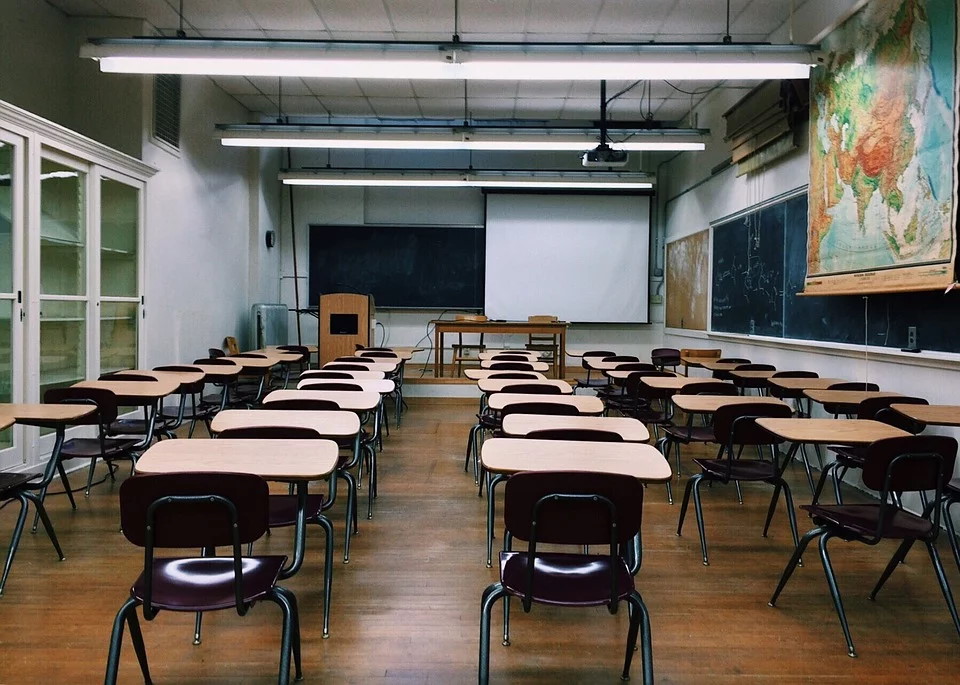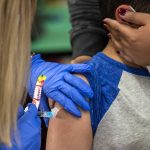School Aid Shrinks for 7 in 10 Wisconsin Districts
Most districts see aid cuts as $350 million shifts to private programs.
The Wisconsin Department of Public Instruction (DPI) released its 2025-26 general school aid data this week, showing that 71% of public school districts will receive less general school aid this year, while over $350 million in general aid will be diverted to voucher schools.
Each year DPI is required by state law to release the certified aid figures by Oct. 15. The data for the 2025-26 school year shows that of 421 districts, 111 — or 26% — will receive more aid, while 301 districts — or 71% — will receive less. The numbers replace those from the estimate released in July, which had shown a projected 65% of schools would receive less aid.
DPI noted in a release that the state’s total general aid remained flat this year at $5.58 billion. The Republican-led Legislature decided during the recent state budget process not to provide additional general aid to public school districts.
The distribution of general aid funds is determined by a formula that considers property valuation, student enrollment and shared costs. When school districts lose state aid, they do not lose school revenue authority, meaning many school districts will be left to decide whether to increase local property taxes to make up the difference or make more budget cuts.
Democratic lawmakers, who have repeatedly called for increasing general school aid, blamed their Republican colleagues for the numbers during a virtual press conference Thursday morning.
Sen. Jeff Smith (D-Brunswick) said that data “provided a harsh reality check for school districts that their state Legislature, specifically the Republican-controlled state Legislature, which they have controlled for 30 out of the last 32 years, does not view them as a priority.”
“When Democrats win a majority in the state Senate, our schools will not have to fear this Oct. 15 date,” Smith said, adding that Democrats are “committed to investing in the future of Wisconsin children and re-establishing our state as one of the leaders in K-12 education as it once was.”
“This system that our state has been forced to adopt is not sustainable,” Sen. Jodi Habush Sinykin (D- Whitefish Bay) said. In lieu of state funding, school districts in Wisconsin have turned to raising property taxes through referendum, which must be approved by voters, in order to meet their financial obligations, including paying staff salaries, purchasing educational materials and building costs.
After the state budget was signed, some school leaders warned that the trend of relying on property taxes would continue without a state general aid increase.
“Due to the Legislature’s failure to fund our schools, Wisconsin already has one of the highest property tax rates in the country, and if our communities continue to be forced to referendum, those tax rates will continue to rise, making our state even more expensive than it already is. Wisconsin residents are depending on their elected officials to rein in the skyrocketing costs of living in our state,” Habush-Sinykin said. “Yet, the Republican-controlled Legislature has no problem forcing their constituents to suffer under continuously rising property taxes.”
Viroqua School Board President Angie Lawrence said during the press conference that the system is bolstering inequity in Wisconsin schools.
“The school districts and areas of high poverty are generally failing when trying to pass a referendum and the wealthy districts generally are passing their referendum when going to their communities… Is this who we really want to be?” Lawrence asked. “Don’t you think that our tax dollars should be supporting every student equally so that each student has a path to academic excellence, and we shouldn’t have to go to referendum in order to provide a high quality education for our students?”
School voucher programs grow
Alongside funding for public schools, the DPI also released data on the costs of the state’s school voucher programs, which use taxpayer dollars to cover the cost of tuition for students who attend private and charter schools.
The estimated annual cost for the state’s voucher programs in the 2025-26 school year overall is about $700.7 million.
According to the DPI data, $357.5 million will be reduced from general school aid to go towards private voucher schools in 2025-26. This includes $260.9 million for the Wisconsin Parental Choice Program, $44.4 million for the Racine Parental Choice Program and $52.2 million for the Special Needs Scholarship Program.
The rest of the $700.7 million going toward voucher schools will come from the state’s general purpose revenue to fund students in the Milwaukee voucher program as well as for students in the Racine voucher program who enrolled before the 2015-16 school year. The Milwaukee program is estimated to cost $336 million.
Enrollment in all four of the state’s school choice programs rose by 2,349 students in the 2025-26 school year, reaching a high of 60,972 students.
The Milwaukee program grew by 235 students, the Racine program shrank by 14 students, the statewide program grew by 1,814 students and the special needs program grew by 419 students.
Organizations that support school voucher programs had mixed reactions — celebrating the growth, but also cautioning that it was modest compared to previous years.
“Lawmakers in Madison should continue to prioritize protecting these private-school options for all students,” said Carol Shires, vice president of operations for School Choice Wisconsin. “This milestone validates the strong support from Wisconsin’s political leaders for strengthening the financial foundation of parental choice programs.”
School Choice Wisconsin, the largest school choice lobbying group in the state, also noted in its press release that the growth comes as an enrollment cap on the statewide Wisconsin Parental Choice Program is set to expire in the 2026-27 school year.
“[The caps coming off] will allow more families – including those now on waiting lists – to benefit from the nation’s longest-standing program committed to educational freedom,” School Choice Wisconsin said.
Caps on school voucher program participation, which limits the percentage of students in a district who can participate, have been increasing by 1% per year since 2017 and reached 10% of a school district’s enrollment in the 2025-26 school year. When the nation’s first school voucher program launched in Milwaukee in 1990, enrollment was limited to no more than 1% of the Milwaukee Public Schools student population. When the statewide program launched in 2013, enrollment was limited to just 500 students and no more than 1% of a district’s enrollment.
According to the Institute for Reforming Government, a conservative think tank, this year’s numbers represent stable growth for the Milwaukee, special needs and independent charter school programs, but the Wisconsin Parental Choice Program had its lowest growth since 2017-2018.
Quinton Klabon, the organization’s senior research director, urged supporters of school choice to not be complacent.
“Informing parents, expanding high-quality schools, and protecting schools from hostile red tape are high priorities. Otherwise, the baby bust will close choice schools,” Klabon said in a statement.
The total number of schools participating in the statewide program has risen from 403 schools in 2024-25 to 415 schools in 2025-26.
Republicans have introduced some legislation this year to support enrollment in voucher programs. AB 460 from Rep. Cindi Duchow (R-Delafield) would change state law to ensure that siblings of a student who participated in a voucher program would be eligible for enrollment. AB 415, coauthored by Rep. Shae Sortwell (R-Two Rivers) would prohibit DPI from requiring documents to verify a student’s residence unless their residence has changed from a previous verification.
Democratic lawmakers and public education stakeholders expressed concerns about what the school voucher enrollment numbers will mean for the state’s public schools.
Lawrence of Viroqua called attention to the amount of money going to the Academy of Excellence, a Milwaukee virtual private school that has been criticized for misusing public funds and for blurring the line between homeschooling and voucher schools. Students who are homeschooled in Wisconsin aren’t supposed to receive public funding under state law.
“The Academy of Excellence is not excellent,” Lawrence said. “It is not meeting the requirements of high standards of public education, and yet it received over $40 million in tax dollars from the state of Wisconsin [in the 2024-25 school year]… They are funding families that choose to homeschool without the cost of bricks and mortar, or the transparency of how they’re spending the tax dollars they receive. If our state wants to make improvements in education for our students, let’s put our money where our mouth is and spend our tax dollars to improve public education so we can provide the highest academic outcomes for each child.”
The Academy of Excellence is estimated to receive over $50 million in 2025-26 from the state with over 4,000 students enrolled. Those enrollment numbers include students in various voucher programs throughout the state — 808 students from the Milwaukee program, 200 from the Racine program, 3,340 from the statewide program and 63 who are enrolled in the special needs program.
Democratic lawmakers in recent months have introduced an array of bills aimed at limiting voucher school programs and increasing transparency surrounding the costs.
This week Sen. Chris Larson (D-Milwaukee) is circulating draft legislation that would bar virtual schools from being able to participate in the voucher program.
Rep. Christian Phelps (D-Eau Claire) has introduced AB 307, which would eliminate the sunset on the voucher program caps, leaving them at 10% into the future, and AB 496, which would require an annual verification of the income of voucher students’ families. (Currently, there is an income cap to enroll in the programs of 220% for the Wisconsin Parental Choice Program and 300% for the Milwaukee and Racine programs. If a student is continuing in a program or was on a waiting list, they are not required to meet income limits.) Lawmakers have also proposed legislation to disclose voucher costs on property tax bills across the state.
Habush-Sinykin said on the call that the voucher program caps coming off is a “crisis” facing the state’s education system. However, she said advancing bills that would change the state’s trajectory will likely take new leadership in the Senate and Assembly.
“It’s really up to all of us to explain how important it is to have a change in the legislative leadership so that we can have bills… like keeping caps on vouchers, etc., be heard and voted on,” Habush Sinykin said.
DPI data shows general aid decreases for public school districts, increases in voucher enrollment was originally published by the Wisconsin Examiner.
If you think stories like this are important, become a member of Urban Milwaukee and help support real, independent journalism. Plus you get some cool added benefits.























With so few controls and visible accountability standards and hundreds of millions of dollars in State funding, you can be sure that there is a significant amount of waste, fraud and abuse in the State school choice program. The State could create an office of Inspector General with a staff that could investigate allegations of waste, fraud, and abuse. One would think that the choice schools with longstanding church affiliations and the ones funded buy the wealthy conservative billionaires would want some reasonable standards to establish a reputation of legitimacy with the public.
There should be accountability for both public and private schools. With that said, what is more important than the education of our children?
Increase the number of Milwaukee Public School students attending MATC? There used to be a class at Bay View High School that rebuilt homes in the neighborhood. What happened to those sorts of programs where students are doing real work?
Funding plummets … quality of education plummets
Our youngest generations are doomed.